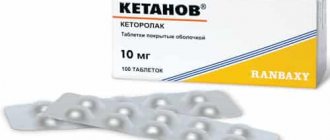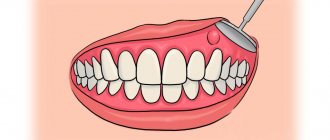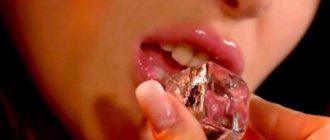What to do if your tooth hurts
Medicines
Folk remedies
Causes
If children have toothache
Toothache can occur unexpectedly and take you by surprise in the most inopportune place. Let's look at how to relieve pain before going to the dentist in this article.
What not to do if you have a toothache
The goal of first aid for dental pain is to alleviate suffering and create tolerable conditions for the patient before going to the dentist. And it is advisable to do this without serious health complications for the sake of five-minute relief. Therefore, it is worth knowing first of all what not to do.
Do not apply heat. If you suffer from acute toothache, it is not recommended to heat either the tooth itself or the cheek. Severe toothache indicates the presence of an inflammatory or infectious process. By applying warm compresses or using other heating methods, you stimulate blood flow to the pathological area. Instead of one diseased tooth, you can get a complication affecting the entire dentition.
If a tooth hurts, it is much more effective to replace warm compresses with briefly applied ice;
Use medications carefully. You cannot blindly believe everything that is written on the Internet. Severe toothache can be effectively relieved or alleviated only in a dental office. All other methods give only an insignificant short-term effect; you should not expect a miraculous cure from them. Do not inject painkillers into the gums yourself, and do not use medications not intended for this purpose to relieve toothache. For example, an aspirin tablet applied to a disturbing tooth can cause severe burns to the mucous membrane, but will not bring relief;
Bed rest is not for you. If you are taken by surprise by an acute toothache, it is better to resist it on your feet or while sitting. The half-sitting position is the very compromise that will allow you to more comfortably endure an unpleasant and exhausting situation and will not cause even more harm to the aching tooth. The fact is that when a person is in a horizontal position, the blood flow to the diseased tooth increases. Increased pressure is created around the already irritated nerve endings and severe toothache becomes simply unbearable. If an acute toothache catches you at night, place the pillows higher, lean back on them and try to take a nap in this position;
Hot rinses and folk remedies. Most ways to relieve tooth pain are based on traditional methods of treatment and pain relief. And the vast majority of recipes advise using hot rinses. You can't do this! But if you use these same herbal decoctions warm, the effect can be very positive, in extreme cases, harmless.
Types, signs and symptoms of periodontitis
According to the Russian classification, there are several forms of inflammatory processes developing in the periodontium.
- Spicy.
- Chronic.
- Separately, it is customary to highlight exacerbations of chronic inflammation of the tooth root.
Signs and symptoms of acute periodontitis
The main symptom of this form of the disease is sharp, aching, sometimes unbearable pain. In this case, the pain is clearly localized in the area of the diseased tooth and is permanent. If the patient did not receive dental care on time, the pain quickly intensifies, becomes tearing and pulsating, which in most cases indicates that the primary inflammation has turned purulent.
The period during which an acute form of tooth root inflammation can last is from several days to 2 weeks. In this case, two successive stages are distinguished.
- 1st (phase of periodontal intoxication). Severe, persistent aching pain is the main sign indicating the beginning of the development of the inflammatory process. Often the patient feels heaviness in the area of the affected tooth and complains of a dull pain, which sharply intensifies when trying to bite.
- 2nd (exudative). In this phase, inflammation of the tooth root is characterized by very strong pain that does not subside without the use of analgesics for almost a minute. Unbearable pain is now caused not only by biting, but even by a slight touch of the tip of the tongue to the affected tooth. Most patients complain of the feeling that the diseased tooth is “pushing out”, which to some extent corresponds to reality, since it acquires increased mobility. In the exudative stage, the adjacent soft tissues may swell and the lymph nodes may become inflamed.
Chronic inflammation of the tooth root
Diagnosing the chronic form in a timely manner is difficult for two reasons. First, many patients do not have the signs and symptoms characteristic of acute apical periodontitis, and complaints may be misleading. Secondly, the clinical picture of chronic periodontal inflammation is in many ways similar to other diseases, for example, some complex types of pulpitis.
The following signs and symptoms may indicate the development of chronic tooth root inflammation.
- There is usually no constant or prolonged pain, but severe discomfort is often felt when pressing and biting on the affected tooth.
- A weak, intermittent feeling of heaviness and fullness, intensifying from time to time.
- Bad breath.
- Change in tooth color (not to be confused with carious stains).
- The occurrence of fistulas.
- Enlargement of regional lymph nodes, their pain.
- Unpleasant sensations when pressing on the gums.
During a diagnostic examination, the dentist usually identifies a deep cavity, the probing of which causes severe pain in the patient. The diagnosis is made based on the X-ray obtained.
What to do if your tooth hurts
First aid for a toothache begins with identifying the causes of the discomfort and eliminating irritating factors. Toothache can be caused by various irritants:
- Hot or cold food and drinks;
- Cold air;
- Sweet, sour, salty foods and drinks;
- Pressure drop;
- Head position;
- By pressure or other influence;
- Food getting into the carious cavity;
- Other mechanical effects on the tooth.
As soon as it becomes clear why the tooth hurts at a particular moment, it is necessary to stop the irritating influence. After this, consult a doctor for help. If the appointment is postponed for a long time, then it is worth taking painkillers.
Tooth structure
The tooth consists of two parts. 1 - The top part of the tooth - the crown, which is visible in the mouth and 2 - the root of the tooth, which extends into the jaw bone to support the tooth in the desired position.
Teeth also consist of:
- enamel - hard outer coating
- dentin - the softer material that supports the enamel and forms the majority of the tooth
- pulp is the soft tissue in the center of the tooth, consisting of nerves, blood vessels and lymphatic vessels.
The root canal system contains the pulp of the tooth and extends from the crown of the tooth to the end of the root, its apex. One tooth can have more than one root canal.
Medicines for toothache
There are many painkillers in pharmacies that are quite effective in helping when a tooth hurts. However, when choosing medications without a prescription and doctor’s recommendations, it is worth remembering that each medicine has a number of contraindications and side effects, so you need to carefully read the instructions, and, if possible, check with pharmacists and pharmacists for information.
The following medications are used to relieve toothache:
| Analgin; | Indomethacin; | Piroxicam; |
| Denebol; | Ketanov; | Solpadeine; |
| Diclofenac; | Ketoprofen; | Tempalgin. |
| Ibuprofen; | Naproxen; |
For local anesthesia and gum disease, Kalgel, Dentinox, Cholisal, Kamistad and Mundizal are suitable. You can also use herbal rinses. They have a calming and antiseptic effect.
Folk remedies for toothache relief
The most popular folk remedies are also based on rinsing the mouth with a decoction of various herbs, as well as applying various non-heating compresses to the sore tooth.
The most effective rinses are:
| Sage; |
| Oregano; |
| Oak bark; |
| Chamomile decoction; |
| Calendula; |
| A solution of soda, salt and iodine. |
Pain in the teeth is well relieved by compresses or acupressure on the sore tooth. To do this, use tampons or cotton pads soaked in a medicinal solution or containing a medicinal substance. This may serve as:
- Propolis;
- Essential oils;
- Alcohol or strong alcohol;
- Garlic or onion-garlic mixture with salt.
Do not forget about the simplest and surest way to temporarily numb the tooth that is bothering you. Just take an ice cube out of the freezer and apply it briefly to the sore area. The cold freezes and stops all processes, so the pain will subside for a while. Do not apply cold for a long time, as it can chill the nerve endings.
Acute toothache
It appears very unexpectedly and is rapidly gaining strength. Pain in the teeth can be so severe that a person may lose consciousness for a while.
Severe toothache can occur when eating, while talking, while drinking a cup of coffee, when clenching your jaw, turning or tilting your head, climbing stairs, and even just while breathing. During each of these actions, the sensitive tooth will encounter irritants and react with severe pain:
- For hot food or water;
- To cold air;
- To change pressure and increase blood circulation.
In this case, toothache can be short-term, occur only in the presence of irritating factors and subside after their removal, incessant, or it can appear and disappear.
In any case, toothache is a reason to immediately consult a doctor. Without delay and expectation of serious complications.
Muffled pain in teeth
This is a toothache that a person is used to putting up with and has adapted to live with. It is not as severe as an acute toothache, but it is unpleasant and poisons life. It can be permanent or periodic, occur with a certain pattern, in response to known stimuli, or on its own.
The cause of muted pain is various diseases of the oral cavity. Even the first sensations of pain are a reason to consult a doctor. Most serious illnesses begin with a completely tolerable pain reaction. But if you don’t visit the dentist in time, you can get pulpitis instead of regular caries, and instead of bleeding gums, you can lose a tooth. To prevent this from happening, you don’t have to endure it when your tooth hurts; you need to immediately make an appointment with a doctor.
Possible causes of toothache
Caries at different stages can cause pain in the teeth. As a result of poor oral hygiene, tartar forms on the teeth, and as a result, caries develops. Gradually, the tooth enamel will be destroyed, and the internal sensitive tissues of the tooth will begin to be affected. In the first stages of caries development, the tooth may react painfully to hot and cold. When the nerve is already inflamed, toothache may occur as a result of food or water coming into contact with it. Self-medication will not help here: the cause of pain can only be eliminated in a doctor’s office;
abscess or gumboil. Purulent deposits form directly in the gums. In this case, the pain in the teeth is quite sharp and throbbing. There is severe swelling in the oral cavity; in particularly severe cases, the entire cheek may become swollen;
Pulpitis is a logical continuation of advanced caries, which causes severe pain in the teeth. When a tooth hurts due to pulpitis, unexpected severe attacks can be experienced at any time of the day or night, with irradiation into the ear or temple;
Mechanical damage . Tooth trauma, chipped enamel, damage to the crown of the tooth - all this will inevitably lead to pain. If the enamel is damaged, but the nerve remains intact, then pain may not occur immediately, but if you do not consult a doctor in a timely manner, an inflammatory process of the pulp may begin;
Various gum diseases - periodontitis, periodontitis, exposure of the necks of teeth. All these diseases often begin with bleeding gums and have very serious consequences, including tooth loss. Therefore, they definitely require treatment at the dentist’s office.
Why do the roots of teeth become inflamed?
- As a consequence of advanced untreated caries or pulpitis. In this case, we are talking about infectious periodontitis, in which inflammation gradually spreads to the periodontium and rapidly progresses. In some cases, the cause of apical periodontitis may be complications of sinusitis or osteomyelitis (the so-called extradental form).
- When injured. The development of traumatic periodontitis can be provoked not only by heavy objects hitting the face or a strong blow to the jaw during a fall, but even minor, but constantly recurring microtraumas. As a rule, traumatic periodontitis is particularly acute.
- Improper treatment of pulpitis can also lead to inflammation of the tooth root - drug-induced periodontitis. The inflammatory process develops as a result of the contact of drugs containing arsenic or other potent chemical compounds on the surface of the periodontium. Sometimes the root becomes inflamed as a result of an acute allergic reaction to certain medications used in the conservative treatment of pulpitis.
Other factors leading to periodontitis
- Obstruction of root canals.
- Perforation of the root wall or cavity.
- The appearance of cysts, which can be located around the very root of the tooth or grow into the maxillary sinuses.
- Damage to the root during the removal of the stump or pin.
In some cases, we are not talking about apical, but about the so-called marginal periodontitis, in which not only the apex of the tooth root is affected, but also the gums in its cervical part. The treatment of such severe pathology should be carried out by a specialized periodontist.
Tooth pain in children
An adult can still endure toothache. But when a child has a toothache, it is no less painful for a parent, since it can be very difficult to help in such a situation. Pain in the teeth, or more precisely in the gums, begins in the first year of life, when the baby begins to teethe. In this case, there is no need to urgently run to the dentist for help. A scheduled visit to a specialist as part of a scheduled medical examination is sufficient.
Special teething toys with a cooling effect, toothpastes and silicone brushes for babies, as well as local painkillers will help relieve your baby’s toothache during this period. The most popular and safest for the health of children are Kalgel and Cholisal.
If the problem is not teething, and the baby is worried about something else, for example, problems with the gums or oral mucosa, this is a reason to urgently consult a doctor. Even at such an early age, a dentist can diagnose candida or gingivitis. Proper oral hygiene and timely local treatment will help quickly solve the problem.
Your baby may experience toothache when baby teeth emerge. The very first serious disease is bottle caries. An incorrect diet and prolonged use of a bottle can lead to complete loss of the front baby teeth, so regular visits to the dentist are mandatory from an early age.
After bottle caries, the most common caries of baby teeth can develop. It is very difficult to treat such teeth, since fillings do not adhere well to small teeth. It is much easier and more effective to prevent the development of the disease. Today, pediatric dentistry offers many ways to preserve baby teeth.
Treatment of tooth root inflammation in a dental clinic
The dentist determines the optimal treatment tactics depending on the form, type and severity of apical periodontitis. In dental practice, both conservative and surgical treatment are widely used. In most cases, acute or chronic apical periodontitis can be cured using only conservative methods without surgery.
Conservative treatment
Complex treatment of periodontal inflammation in the clinic includes the following stages.
- Diagnosis is performed using an x-ray.
- The doctor drills and removes old fillings (if any), which opens free access to the canals of the diseased tooth.
- Mechanical cleaning of the channels is carried out.
- The nerve is removed.
- The canals are widened and then subjected to antiseptic treatment to disinfect the tissues. At this stage, the dentist uses special antiseptic medications.
- The drug is placed into the prepared cavity, after which a temporary filling is installed.
- At the next visit to the dental clinic, the doctor removes the patient’s temporary filling and once again treats the canals with antiseptic drugs. It is not always possible to solve the problem in 2 visits: the number of visits to the dentist-therapist will entirely depend on how large the source of inflammation is. In particularly advanced cases, complete recovery requires several weeks or even months.
- After the inflammatory process in the periodontium is completely cured, the dentist places a permanent filling.
- After completion of complex treatment, a control x-ray is taken.
During the treatment period, your doctor may prescribe antibiotics and other medications. As with other diseases, complications can sometimes arise with conservative treatment, for example, perforation of the walls of the dental root canal or damage (tip breakage) of a dental instrument during the expansion of the canals.
Surgical treatment of acute and chronic periodontitis
In rare cases, when conservative treatment in a dental clinic was ineffective or did not produce the desired results, the patient is prescribed surgery. Surgical treatment of inflammation includes removal of the apex or part of the root. Sometimes it is necessary to completely remove a tooth affected by acute or chronic inflammation.
Modern methods of conservative treatment make it possible to avoid surgery in 70-90% of cases, while existing technologies of dental surgery make every surgical intervention safe, virtually painless and effective.











